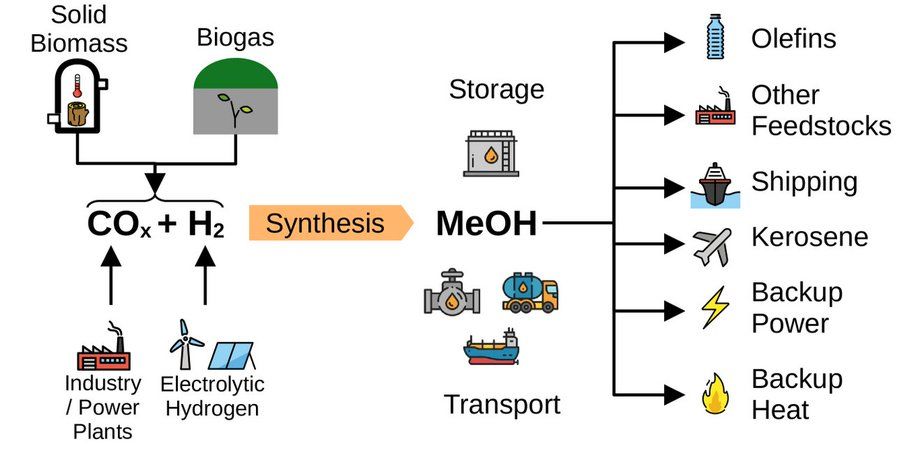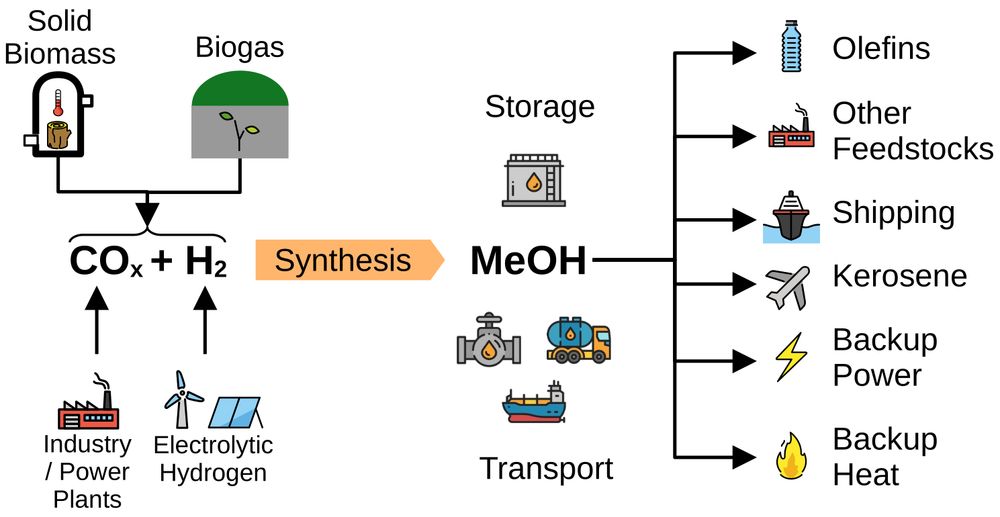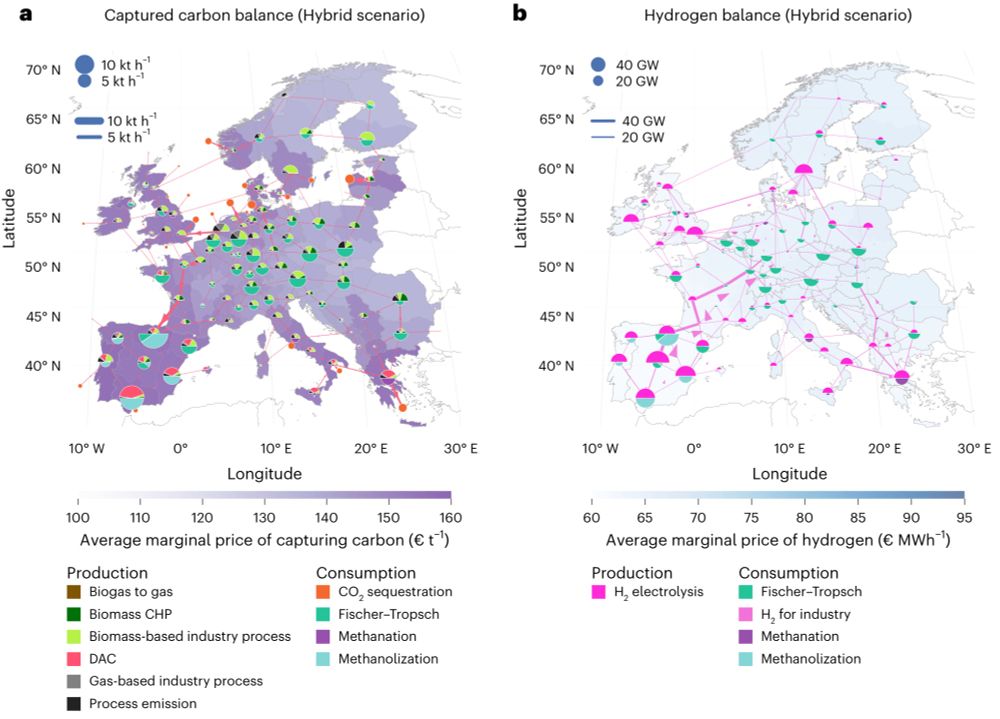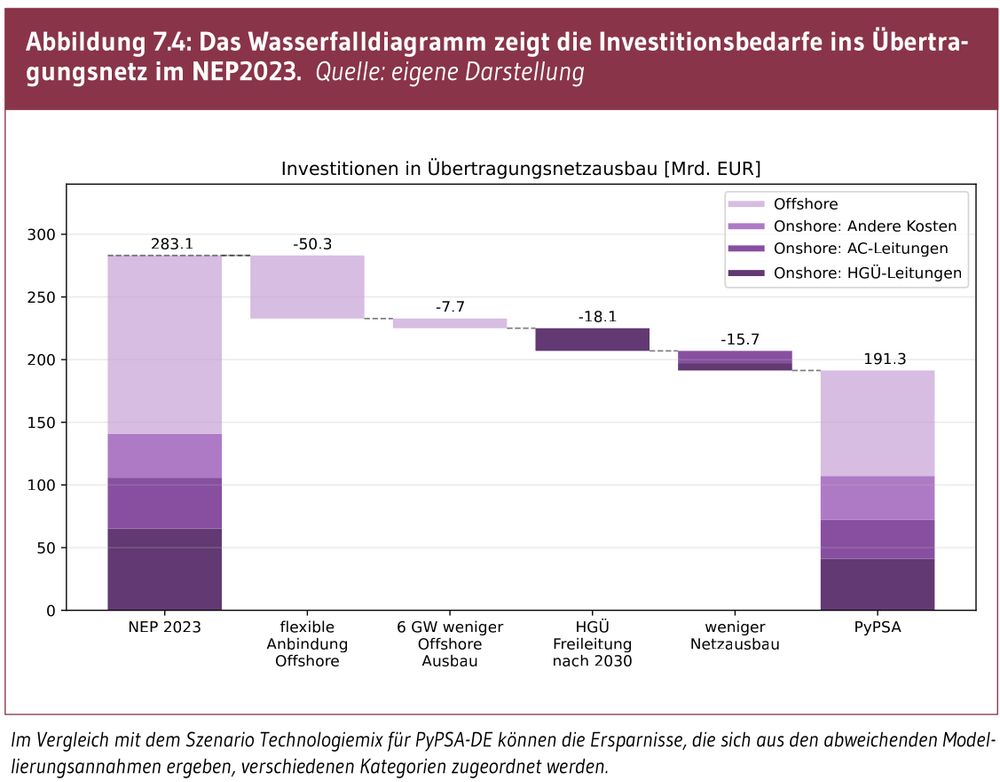🔗 New Documentation: docs.pypsa.org
🔗 New Landing Page: pypsa.org

🔗 New Documentation: docs.pypsa.org
🔗 New Landing Page: pypsa.org
✨ Highlights
🔗 New Documentation: docs.pypsa.org
🔗 New Homepage: pypsa.org
🎲 Two-stage stochastic programming, including Conditional Value at Risk (CVaR).
🗺️ Interactive maps.
🔄 Extended MGA functions.
🙏 Thanks to all contributors and @dfg.de for funding recent developments!

✨ Highlights
🔗 New Documentation: docs.pypsa.org
🔗 New Homepage: pypsa.org
🎲 Two-stage stochastic programming, including Conditional Value at Risk (CVaR).
🗺️ Interactive maps.
🔄 Extended MGA functions.
🙏 Thanks to all contributors and @dfg.de for funding recent developments!
📽️ www.youtube.com/watch?v=nnAm...

📽️ www.youtube.com/watch?v=nnAm...
arxiv.org/html/2505.09...

arxiv.org/html/2505.09...
Steel 🔩, methanol ⛽, ammonia 🌾, hydrogen 🫧, electricity ⚡ - What to bring in and what to keep local?
New #pypsa study in @natcomms.nature.com with @nworbmot.bsky.social and @euronion42.bsky.social.
www.nature.com/articles/s41...

Steel 🔩, methanol ⛽, ammonia 🌾, hydrogen 🫧, electricity ⚡ - What to bring in and what to keep local?
New #pypsa study in @natcomms.nature.com with @nworbmot.bsky.social and @euronion42.bsky.social.
www.nature.com/articles/s41...
youtu.be/BsK-MhUH09c?...

youtu.be/BsK-MhUH09c?...
Reach out if you’re around!
sustainable-energy-week.ec.europa.eu/index_en
interactive.eusew.eu/eusew-2025/s...

Reach out if you’re around!
sustainable-energy-week.ec.europa.eu/index_en
interactive.eusew.eu/eusew-2025/s...
New working paper together with Philipp Glaum, @fneum.bsky.social, @millinger.bsky.social:
arxiv.org/abs/2505.09277

New working paper together with Philipp Glaum, @fneum.bsky.social, @millinger.bsky.social:
arxiv.org/abs/2505.09277

📅 Dates: June 26-27, 2025
📍 Location: DTU - Lyngby
👨🏫 Instructors: @fneum.bsky.social, @iriepin.bsky.social, @martavictoria.bsky.social Aleksander Grochowicz
Registration: forms.gle/4559UPat7NtM...

📅 Dates: June 26-27, 2025
📍 Location: DTU - Lyngby
👨🏫 Instructors: @fneum.bsky.social, @iriepin.bsky.social, @martavictoria.bsky.social Aleksander Grochowicz
Registration: forms.gle/4559UPat7NtM...
📖 See our new study in @natureenergy.bsky.social on future carbon management: www.nature.com/articles/s41...

📖 See our new study in @natureenergy.bsky.social on future carbon management: www.nature.com/articles/s41...
📖 See our new study in @natureenergy.bsky.social on future carbon management: www.nature.com/articles/s41...

📖 See our new study in @natureenergy.bsky.social on future carbon management: www.nature.com/articles/s41...

📖 See our new study in @natureenergy.bsky.social on future carbon management: www.nature.com/articles/s41...
🧮 PtX Business Opportunity Analyser
www.agora-industry.org/data-tools/p...
developed with @oekoinstitut.bsky.social ,
optimization implemented in pypsa
@nworbmot.bsky.social
@emircolak1.bsky.social
@janke.bsky.social

🧮 PtX Business Opportunity Analyser
www.agora-industry.org/data-tools/p...
developed with @oekoinstitut.bsky.social ,
optimization implemented in pypsa
@nworbmot.bsky.social
@emircolak1.bsky.social
@janke.bsky.social
Hydrogen production is best located near hydropower, wind power or hydrogen demand clusters. Domestic hydrogen production can be cost-competitive compared to import
doi.org/10.1016/j.ij...
Hydrogen production is best located near hydropower, wind power or hydrogen demand clusters. Domestic hydrogen production can be cost-competitive compared to import
doi.org/10.1016/j.ij...
"Participants will benefit from in-depth technical sessions, hands-on training with #Gurobi Optimizer and #PyPSA"
www.gurobi.com/microsite/20...

"Participants will benefit from in-depth technical sessions, hands-on training with #Gurobi Optimizer and #PyPSA"
www.gurobi.com/microsite/20...
docs.google.com/presentation...
docs.google.com/presentation...
📅 Dates: May 22-23, 2025 (Thu-Fri)
📍 Location: Technische Universität Berlin
🗣️ Language: English
👨🏫 Instructor: me and others
🔗 Register by April 30, 2025
🎟️ Registration: forms.gle/yrPnzeGtVQLt...
#pypsa #energysky #energy
📅 Dates: May 22-23, 2025 (Thu-Fri)
📍 Location: Technische Universität Berlin
🗣️ Language: English
👨🏫 Instructor: me and others
🔗 Register by April 30, 2025
🎟️ Registration: forms.gle/yrPnzeGtVQLt...
#pypsa #energysky #energy
📅 Dates: May 22-23, 2025 (Thu-Fri)
📍 Location: Technische Universität Berlin
🗣️ Language: English
👨🏫 Instructor: me and others
🔗 Register by April 30, 2025
🎟️ Registration: forms.gle/yrPnzeGtVQLt...
#pypsa #energysky #energy
📅 Dates: May 22-23, 2025 (Thu-Fri)
📍 Location: Technische Universität Berlin
🗣️ Language: English
👨🏫 Instructor: me and others
🔗 Register by April 30, 2025
🎟️ Registration: forms.gle/yrPnzeGtVQLt...
#pypsa #energysky #energy
Nach unserer Berechnung kann man mit kluger Planung etwa 92 Mrd. EUR (einen ,,Wumms'') sparen

Nach unserer Berechnung kann man mit kluger Planung etwa 92 Mrd. EUR (einen ,,Wumms'') sparen
Sollte eigentlich Pflichtstoff für MdBs sein.
ariadneprojekt.de/publikation/...

Sollte eigentlich Pflichtstoff für MdBs sein.
ariadneprojekt.de/publikation/...

